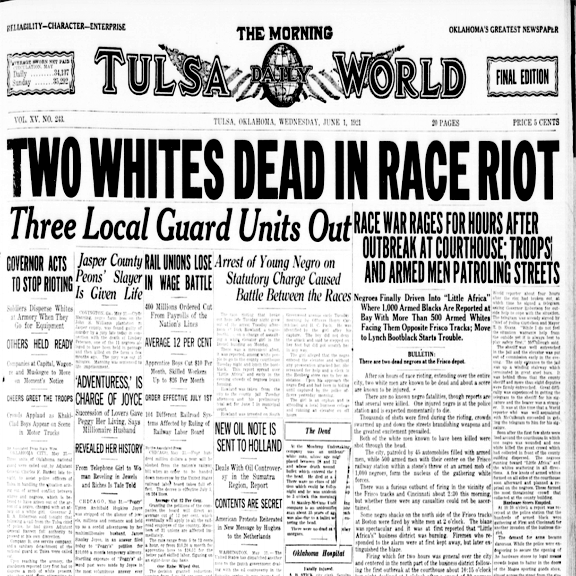The Tulsa Race Massacre of 1921
When Donald Trump planned a campaign rally for June 19th in Tulsa, Oklahoma, it was a double insult to African Americans. There are many events in American history that most white adults would not be able to identify, much less appreciate their significance. The Red Summer of 1919, the Rosewood Massacre, the Great Mississippi Flood of 1927.
In 1923, in Rosewood, Florida a predominantly African American town was utterly destroyed by white mobs. Destroyed so thoroughly that none of the former residents returned.
In 1927, The Great Mississippi Flood decimated an area ranging from Missouri to the harder hit Mississippi and Arkansas Delta. The loss of life and property was immense — both death tolls and property destruction rates were much higher for African Americans than whites. Displaced Black people were relegated to dismal segregated camps.
One of the deadliest attacks of the Red Summer occurred in Elaine, Arkansas. The death toll is estimated at 800. In 2019, a group of Black residents, many descended from the original victims, planted a healing willow tree at a new memorial on the site of graves of the victims of the outrage. In August 2019, vandals cut down the tree.
President Trump may have had little idea that Tulsa was a site of supreme importance to Black Americans — though he was soon made aware of the insult.
BOB HERBERT: But blacks who improved their lot were always at risk. A small enclave of prosperous Black entrepreneurs in Tulsa, Oklahoma, became known as the “Negro Wall Street.” They had their own shops, banks, newspapers, restaurants and theatres, the makings of a self-sustaining middle-class.
But in May 1921, riots broke out when blacks tried to stop an angry white mob from lynching CONTINUE READING: The Tulsa Race Massacre of 1921 – BillMoyers.com


